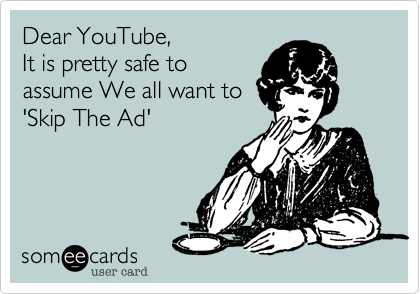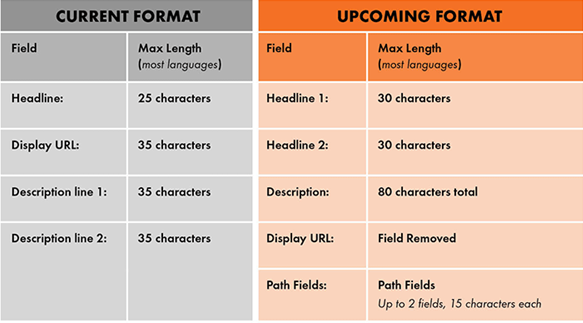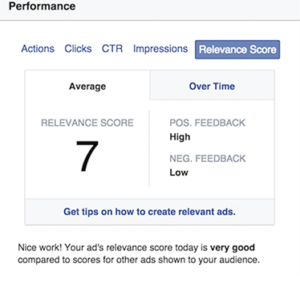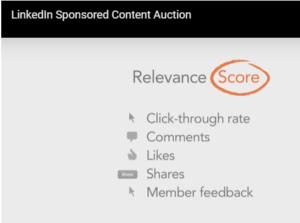Any marketing professional steeped in the details of online advertising and SEM needs to understand the impact of ad relevancy in determining the cost and ultimately the return-on-investment of an advertising spend.
Ad relevancy like content relevancy is another reflection of the user-centered approaches Google, Facebook and other social platforms are taking to increase audience satisfaction and advertiser loyalty. These factors play out somewhat differently, however, across each pay-to-play landscape so the devil is definitely in the details.
ADWORDS AD RELEVANCE
Pay-per-click adwords campaigns define ad relevance as how closely associated your targeted keywords are to your ad copy.
- Using negative keywords with broad match campaigns and broad match modifiers (+keyword) in keyword selections in these, then using separate phrase match and exact match campaigns, you can focus your ad relevancy work within each type of campaign so that your performance improvements pay off in terms of increased ad show rates and SERP positions.
- With the rollout of new text formatting for Adwords text ads a year ago, increased character counts now give advertisers more ammunition to increase ad relevancy by integrating keywords into ad copy.
- Another opportunity to increase ad relevancy is by creating more tightly defined ad groups, narrowly defined by keyword slices. By anchoring a set of ads and ad copy around a smaller subset of keywords, this maximizes your opportunity to boost ad relevance.
- Dynamic keyword insertion {keyword:xxx} in your Adwords campaigns can also boost ad relevancy. Using different parameters (capitalization) in the way you write “keyword” (KeyWord, keyword, Keyword etc.) changes what is ultimately displayed by Google (Alaska Vacations, alaska vacations, Alaska vacations) and Google automatically bolds all dynamically inserted terms in keyword inserted ads which helps make your ad look more prominent and relevant and increases your ad’s click-through rate. Generic ads using keyword insertion but written carefully with short dynamic keywords which adhere to ad character limitations for titles and descriptions can improve overall campaign performance. Dynamic keywords boost ad relevancy within your ad groups leading to better performance (CTR’s, engagement/interactions) and a corresponding increase in impressions and ROI.
- Adwords advertisers can also use improvements in quality scores to boost ad relevancy and performance. Quality scores associated with keywords (in addition to your bid and budget) determine the search engine ranking positions of your PPC ad. In addition to focusing on ad relevancy and ad group relevancy, the key to quality score optimization is landing pages. By ensuring your targeted keyword is added to title, header tags, content of your landing page, you will improve landing page relevance and QS.
The bottom line: maximizing AdWords ad copy, ad group and landing page relevance will increase your ad show rates and impressions, raise your ads’ click-through rates, and ultimately reduce your overall AdWords spend…to say nothing about giving you more leads and conversions.
FACEBOOK AND INSTAGRAM AD RELEVANCE
The number of impressions your Facebook or Instagram ad receives has always been based on numerous factors including ad relevancy (performance):
“Like Facebook ads, Instagram ads are part of the ad auction. For each ad impression, our ad auction system selects the best ads to run based on the ads’ maximum bids and ad performance. All ads on Facebook and Instagram compete against each other in this process, and the ads that our system determines are most likely to be successful will win the auction.” – Facebook
Since 2015, Facebook has begun rating ad relevance using an ad relevance score between 1 and 10, calculated daily for all ads after they reach 500 impressions of visibility. Note that Facebook ads with guaranteed delivery — like those bought through reach and frequency — are not impacted by relevance score.
Facebook and Instagram ad relevancy scores are calculated differently depending on the objective of the ad (e.g. clicks vs likes vs reach vs views etc.). This score is based on both positive actions users take (engagement) as well as negative actions (e.g. lack of engagement, hiding your ad).
Importantly, positive Facebook ad engagement and ad relevancy by increasing CTR, does reduce cost-per-click and cost-per-action as shown in this research.
How can you leverage ad relevancy in Facebook and Instagram?
Testing ad creative in Facebook, then rolling out strong creative across ad sets (copying your ad ID not creating new ones), can help aggregate ad relevance, boost your overall ad relevance score and reduce your costs, again leading to better ROI for your Facebook ad campaigns. While the level of your bids will ultimately also determine which ad Facebook shows to users, ad relevance is an important metric for advertisers to monitor.
LINKED IN AD RELEVANCE
LinkedIn ad bidding auctions also take into account ad campaign relevance. Better overall ad performance (your bid and ad relevance multiplied together to create a combined score) gives your ad better placement in the LinkedIn auction.
The LinkedIn ad relevance score is based on a combination of user feedback metrics:
Unfortunately, at the present time, LinkedIn does not show advertisers what their relevancy scores are for a given ad placement. The key is to use analytics to try to gauge how well your ad is performing in terms of CTR and other metrics (likes, shares) relative to your other ads so you can eliminate underperformers and leverage performers.
Are you staying on top of the relevance of your online advertising? Call us if you need guidance here.




